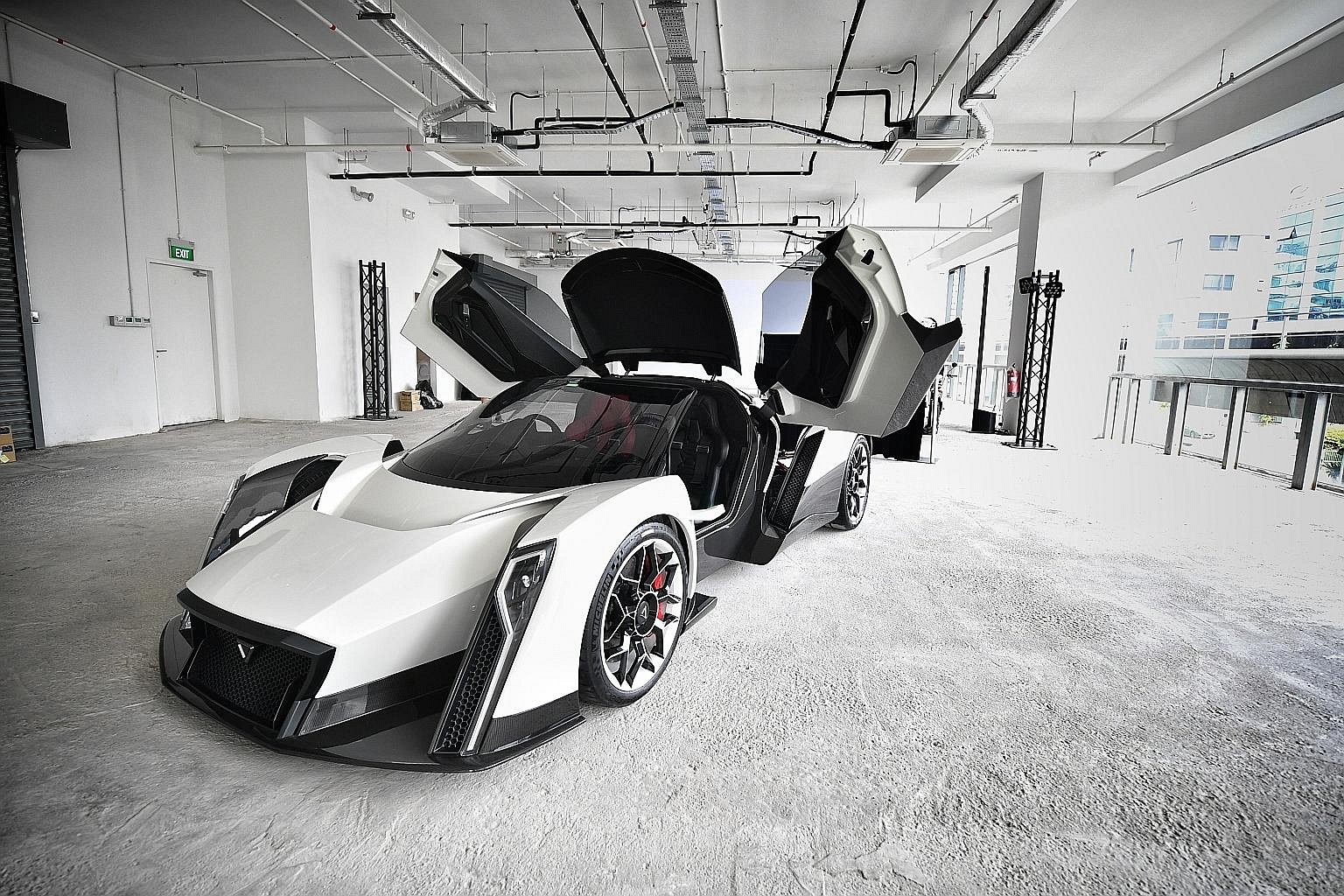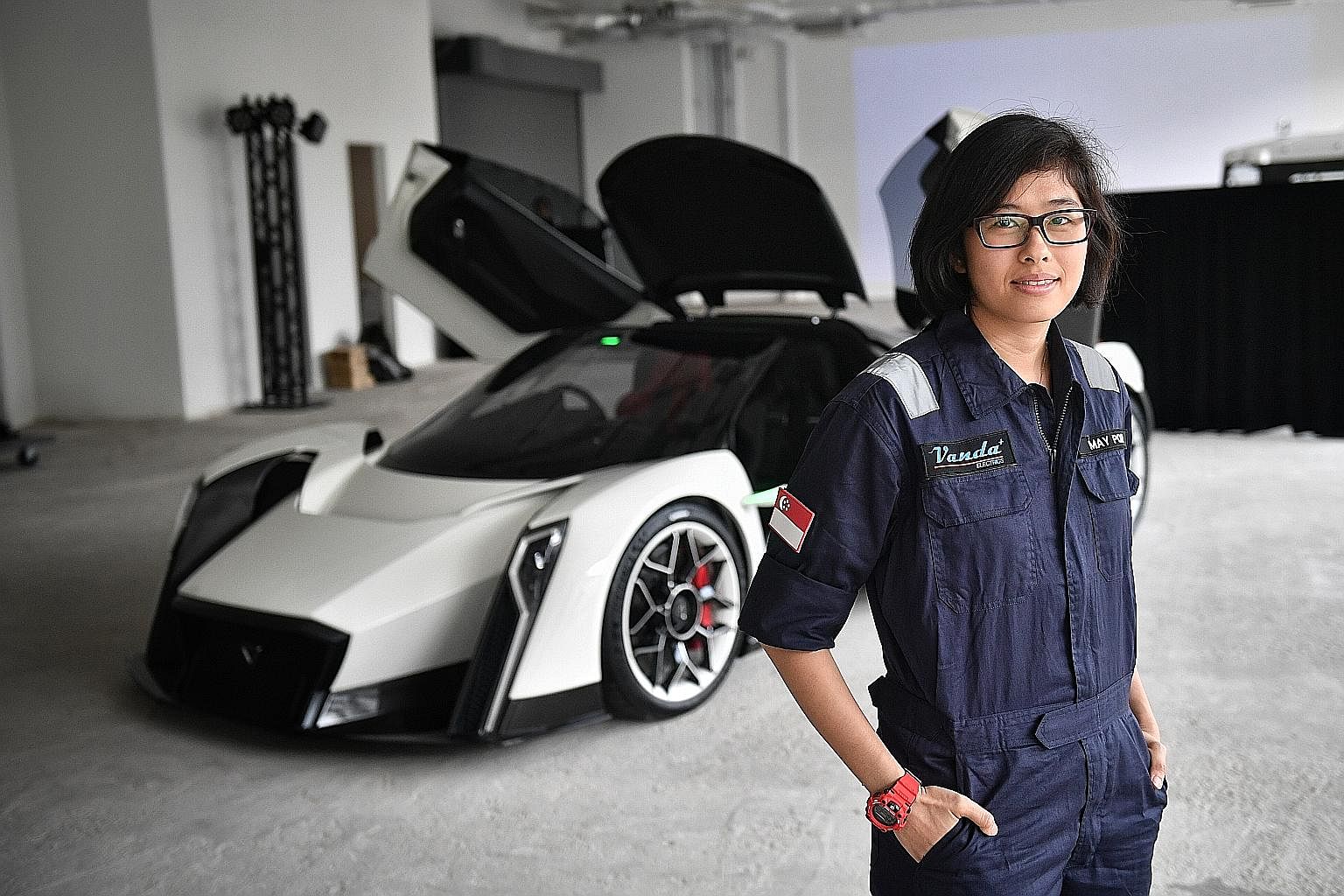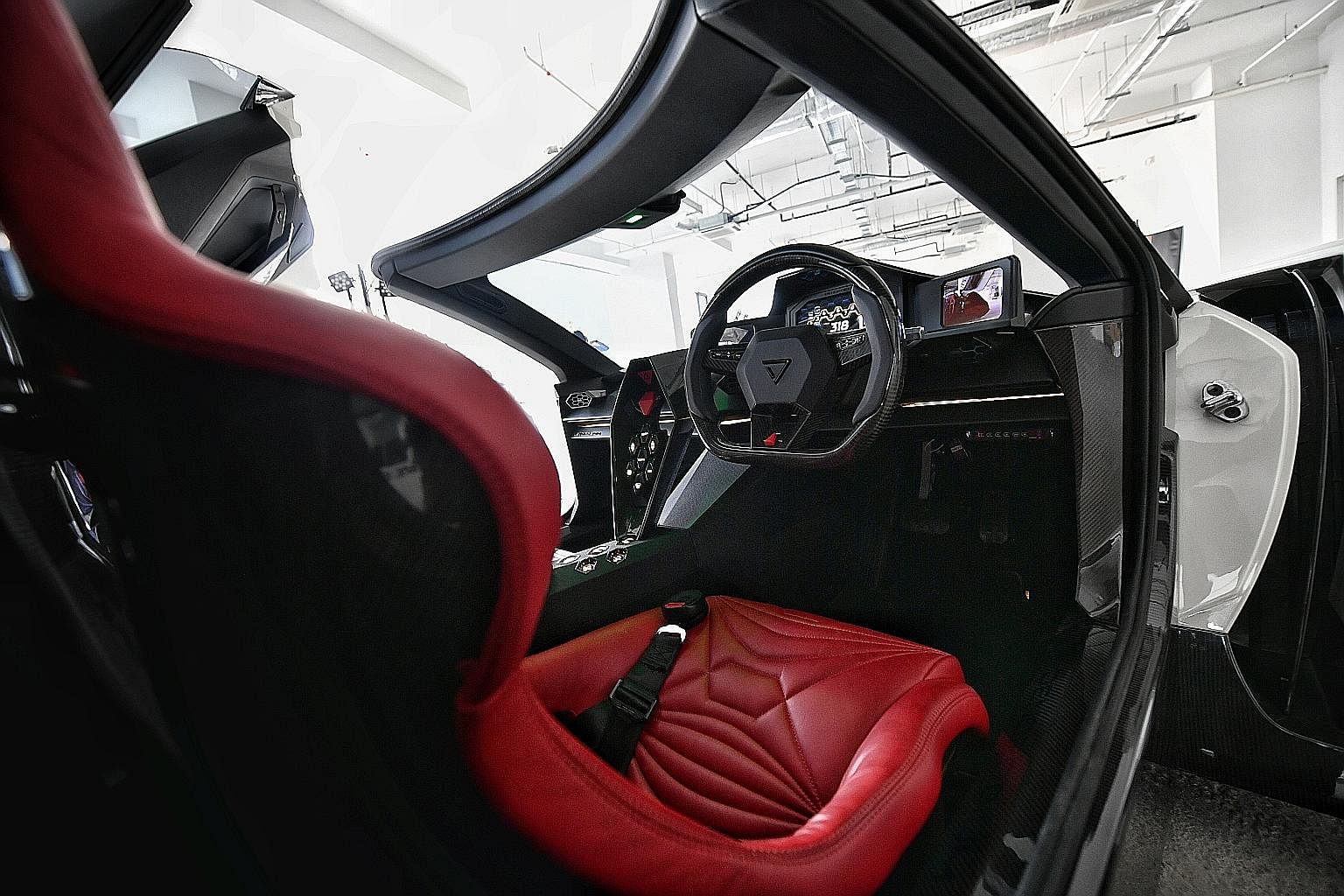It might be the Formula One weekend in Singapore, but beyond the race track, a Singapore-designed supercar has stolen some of the limelight with its homecoming.
The Dendrobium, a fully electric supercar which its designers and engineers say will reach a top speed of more than 320kmh and go from zero to 96.5 kmh in 2.7 seconds, was unveiled at the VinCar showroom in Leng Kee Road earlier this week.
The machine, which has doors and a rooftop that dramatically unfurl upwards and backwards in sync like an orchid in bloom, and a teardrop-shaped body, made its debut in March at the Geneva International Car Show.
VinCar, a multi-label automobile dealers, is the official dealer for the Dendrobium in Asean. Those interested to view and buy the made-to-order car can make an appointment.
The two-seater car, which has a chassis of lightweight carbon fibre, is a zero-emission ride and boasts leather interiors made at Bridge of Weir, a Scottish tanning company known for its low-carbon footprint.
The car's wasp-like behind is designed to look like it is detached from its fenders. Besides creating a sleek silhouette, the space between the body and fenders allows air to be channelled through the car, creating greater downforce when it travels at high speed.
The Dendrobium also has a distinctive wrapover rear spoiler with an integrated taillight and brake light that glows red hot when kicked in.
Singapore-based Vanda Electrics, which conceptualised and designed the prototype, says another selling point is that the Dendrobium is extremely bespoke. The colour, finish and materials of the interiors can all be customised. Even the car's exterior and features such as grilles and fenders can be tweaked to a customer's liking.
Back in 2016, Vanda Electrics took its initial sketches and 3D concept models to Williams Advanced Engineering, the technology division of the Williams Formula One team, which then engineered and built the car in the United Kingdom.
The car is currently in the prototype stage, with projected performance figures based on preliminary studies.
When the car made its Geneva debut, Vanda Electrics had no serious intention of producing it - the first it has built - for the roads.

It was still a conceptual car to show off what the company can design and to "push design boundaries", says Ms May Por, 27, a studio manager at Vanda Electrics who has been involved in the car's design since 2013.
But Vanda Electrics, which pumped in $7 million with the help of angel investors to make the prototype, was encouraged to put it up for sale after positive response at the motor show.
The Dendrobium comes with the eye-watering price tag that is expected to start at €2.5million (S$3.2 million), says Ms Por.

Even then, there has already been seven viewings hosted at the VinCar showroom here.
Buyers need to have not only deep pockets, but also lots of patience - the Dendrobium is slated to be ready only by 2020, if things go as planned.
Parts of its design still have to be modified and approved for use on the road. The car, for instance, needs to be raised higher so that it can go over humps smoothly without hitting the front splitter.

Ms Por says: "Safety tests (need to be done) and features that are required for the road-legal tests will be built into the production model."
And if it does hit production, fewer than 100 units of the car are likely to be made to keep it exclusive, she adds.
Professor Lim Seh Chun, associate provost of student affairs at the Singapore University of Technology and Design, says that achieving the Dendrobium's claimed performance is possible as long as Vanda Electrics and Williams Advanced Engineering get the aerodynamic design and detailing right.
Going electric also seems to be right on the money, as other car manufacturers such as Volvo, BMW and Jaguar are also putting out eco-friendly models.
But Prof Lim points out that designers and makers of electric vehicles have to figure out how to improve battery technology.
"If future batteries are still lithium-based, there would be an upper limit due to the availability of lithium - lithium batteries are also needed in other applications," he says, adding that the range of distance covered on a charge is also an issue.
"If there are no major breakthroughs to achieving a greater range, the attractiveness of electric vehicles may not be strong."


